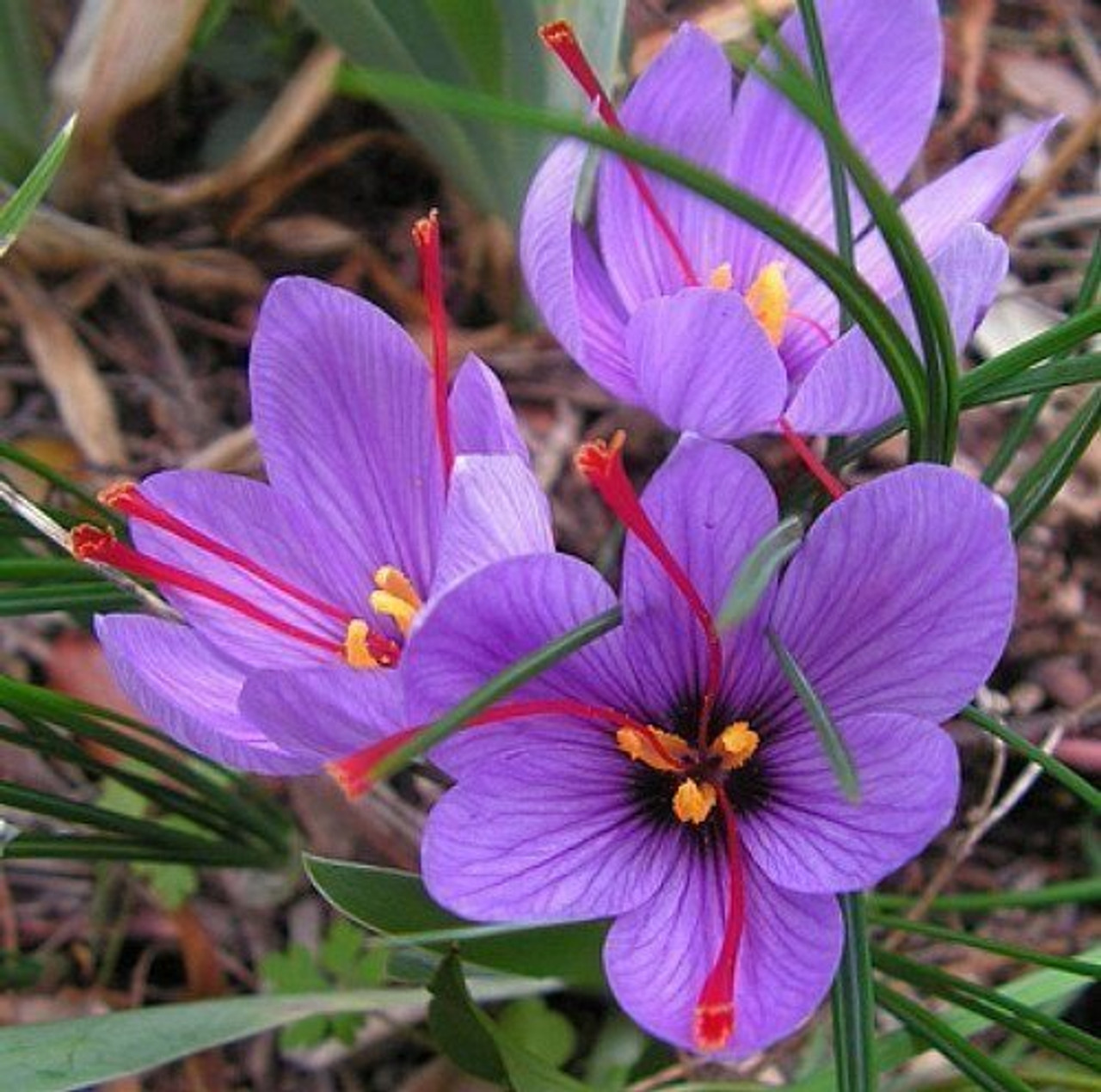Saffron Crocus

Saffron is best known as a colorful and expensive spice that is used in delicious and exotic recipes. By growing saffron bulbs, you can harvest your own supply of this delectable seasoning, and flavor your favorite ethnic foods with a spice from your own garden!
How to Grow Saffron
The saffron crocus bulb produces saffron and blooms during the fall season. The red stigmas in the center of the purple bloom of the crocus flower produce the saffron spice. Because saffron is a fall blooming crocus, it should be planted in the fall. In the spring, foliage will appear and die off, and by the following fall, your saffron flowers will be growing beautifully. It is best to plant saffron bulbs as soon as possible after you buy them, since they do not store well. After planting your saffron bulbs in the fall, they will begin to root and prepare to flower, which takes about 4 to 6 weeks. For harvesting enough saffron spice for cooking, planting two dozen Saffron Crocus will provide enough of the spice to create some exciting and flavorful meals in the first year. Each year, the corms (which resemble bulbs) will multiply rapidly, and after 4 to 6 years, you should divide and replant the corms.
Where and How to Plant
The ideal location for planting saffron is in an area where there is good drainage of the soil and a lot of sun. You may wish to add organic material (peat moss, compost, or ground bark) to raise the soil level by 2" to 3", enhancing drainage ability. Place the bulbs in a spot where they will receive full sun or very light shade. Plant the bulbs 2" - 3" apart, and 3"- 4" deep. The shape of the bulbs has a slightly pointed tip, which should be facing up when placing the bulb in the soil. Gently water the saffron crocus bulbs after they've been planted. In fall, roots will form.
How to Maintain your Saffron Plants
Saffron crocus bulbs bloom in autumn. When the saffron bulbs are in bloom, the colorful stamens may be trimmed and dried for use as a cooking spice. This causes no harm to the plants. After the crocus has completed its blooming for the season, do not cut the foliage back, but keep it in place. During active growth periods, water as needed, which is about 1" of moisture every week. After they're planted, saffron crocus bulbs require little maintenance. Saffron crocus are hardy to -15 degrees F. They will grow fine without fertilization, but you may fertilize them once per year.
Growing saffron is easy and allows you to produce your own supply of the valuable saffron spice. Enjoy creating some new and exciting meals with the saffon spice, including paella and Asian, Indian, and Mediterranean dishes, while adding a lovely fall-blooming plant to your garden.
